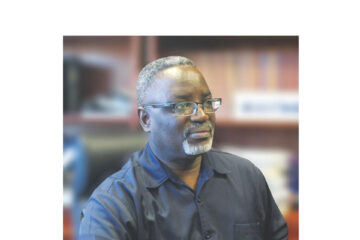Sheldon Husselmann
We know it really matters HOW Hyphen delivers green hydrogen for Namibia. It is critical that we acknowledge and position our project in its overall context – balancing the positive socio-economic impacts it will bring to the country and its people, whilst identifying and minimising its environmental impact.
We will do this through continuing to work directly with local communities and through very selective siting of infrastructure within the vast project area.
Namibia’s position in the world
Globally, there is a strong commitment to transition towards a low-carbon future in a manner that is equitable and tailored to the unique contexts of each country. A critical component of this transition is the adoption of green hydrogen, which plays a vital role in helping heavy emitting industries – such as steel, cement, and fertiliser – decarbonise.
With its extensive, largely uninhabited and protected arid coastline, Namibia is strategically positioned to contribute to global decarbonisation efforts while simultaneously expanding economic opportunities for its population.
The potential for socio-economic improvement in Namibia is significant. Investments in green hydrogen can lead to job creation, enhanced training opportunities, and increased tax revenues, thereby stimulating the growth of new industries.
Hyphen aims to be the first step in the implementation of the Namibian government’s strategy for the development of a large-scale green hydrogen industry in various regions in-country.
But this transition towards a low-carbon economy must be approached with care, and the development of Namibia’s green hydrogen sector cannot be at the expense of protected ecosystems and biodiversity. For Namibia to grow, we need to strike a balance between protecting the environment and enabling economic development.
A balancing act
To achieve this, from the outset, Hyphen has prioritised the environment in every decision we make.
As the development of Hyphen’s project progresses, multiple workstreams are operating simultaneously to deliver the benefits swiftly. For example, we have carried out extensive pre-feasibility environmental work to prepare for the Environmental and Social Impact Assessment (ESIA) and guide the project design.
Typically, ESIA work follows detailed engineering design phases, however, to ensure environmental considerations are prioritised in our engineering work, both processes are being conducted in parallel, thus facilitating early application of what we call the ‘mitigation hierarchy.’ This is where we design our engineering program to limit as far as possible negative impacts to biodiversity thus acknowledging the complexity and sensitivity of the surrounding environment.
The field work conducted during the pre-feasibility phase has been essential in enhancing our understanding of the environmental condition on-the-ground. Adhering to the mitigation hierarchy, we have used an approach where the environmental sensitivity guides the placement of infrastructure. For instance, we have situated our solar generation infrastructure – which requires the most land of all project components – away from the most critical conservation areas.
International best practice
Namibia has a strong history of protecting its sensitive environments – it is one of the few countries in the world where protection of the environment is enshrined in its highest law, the Constitution. Hyphen is committed to developing Namibia’s hydrogen industry in alignment with Namibian environmental legislation and the highest international standards.
During the project bidding phase, Hyphen’s proposed project footprint was guided by the biodiversity sensitive areas mapped in the Tsau //Khaeb National Park’s (TKNP) management plan further demonstrating our commitment to the mitigation hierarchy, purposefully positioning our project infrastructure in areas which are the least ecologically sensitive – a decision we have maintained.
We are also scaling and bundling up infrastructure we will use such as pipelines and powerlines that can also be used for future hydrogen development within TKNP, which is recognised as international best practice for minimising ecological impacts.
Bringing Namibians along on the journey
Extensive public consultation has also been a priority for Hyphen. Over the past two years, we have conducted a National Green Hydrogen Roadshow in partnership with the Government of Namibia, alongside targeted engagement with local and international conservation non-governmental organisations early last year.
As we move into the formal ESIA process, we are committed to comprehensive public consultation efforts that go beyond legal requirements. These requirements will include mandatory newspaper notices, notices on site and direct correspondence with all adjacent landowners and occupiers. Additionally, we plan to broadcast information via radio and hold focus group meetings at a local community level during the scoping phase of the ESIA.
Paving the way forward
If Namibia is to participate in helping the world achieve its global decarbonisation goals and use the opportunity to drive Namibia’s economic prosperity for the benefit of its people, the right balance needs to be found in crafting an approach for environmentally responsible development.
Hyphen is committed to achieving this. From the extensive pre-feasibility work, the forthcoming ESIA guiding the project design, and everything else we learn along the way, Hyphen is dedicated to ensuring our project is developed responsibly.
It is this commitment that will help us minimise our ecological footprint while delivering transformative opportunities for the Namibian people.
Sheldon Husselmann is a senior project developer – environment workstream lead at Hyphen




